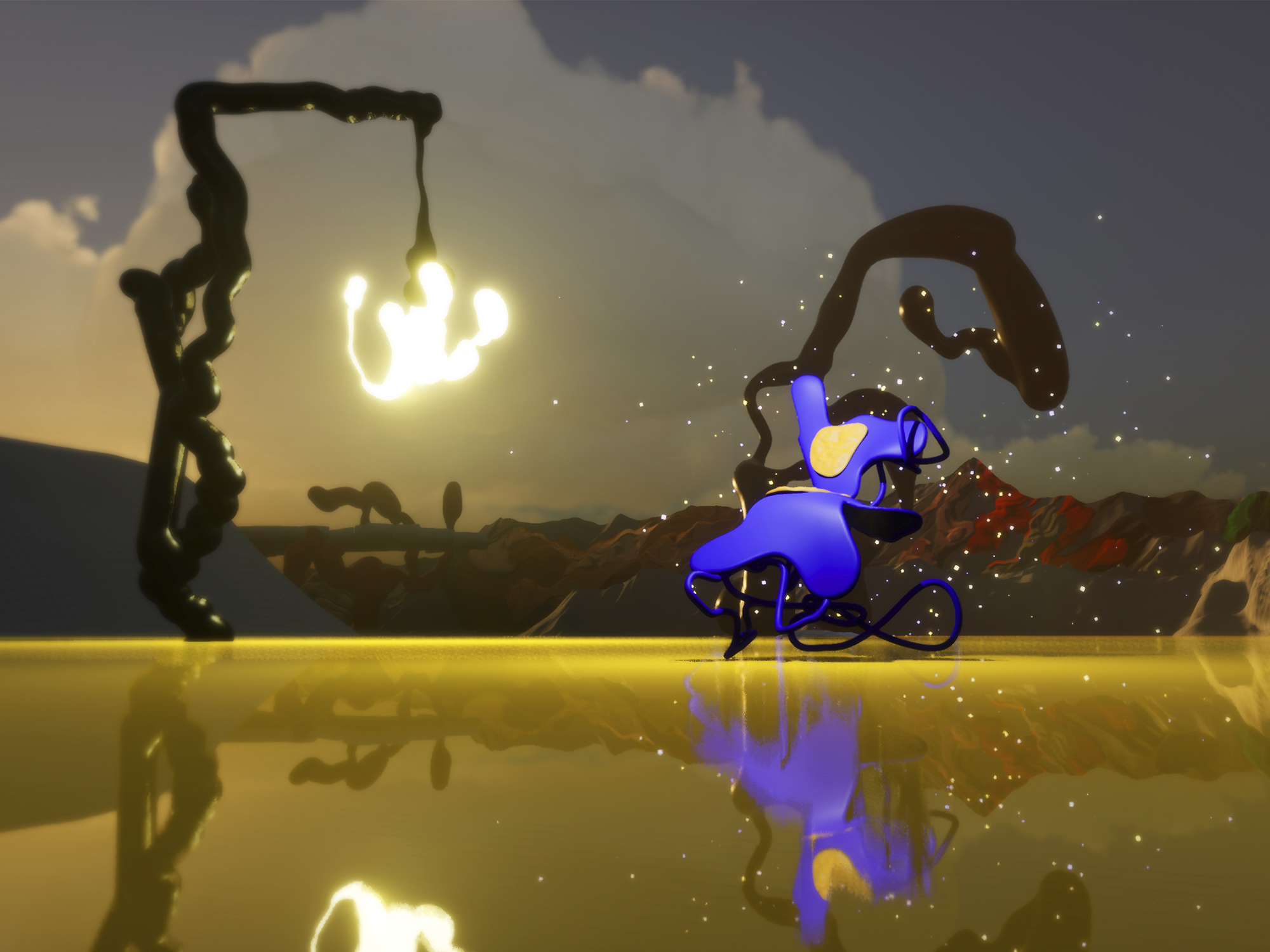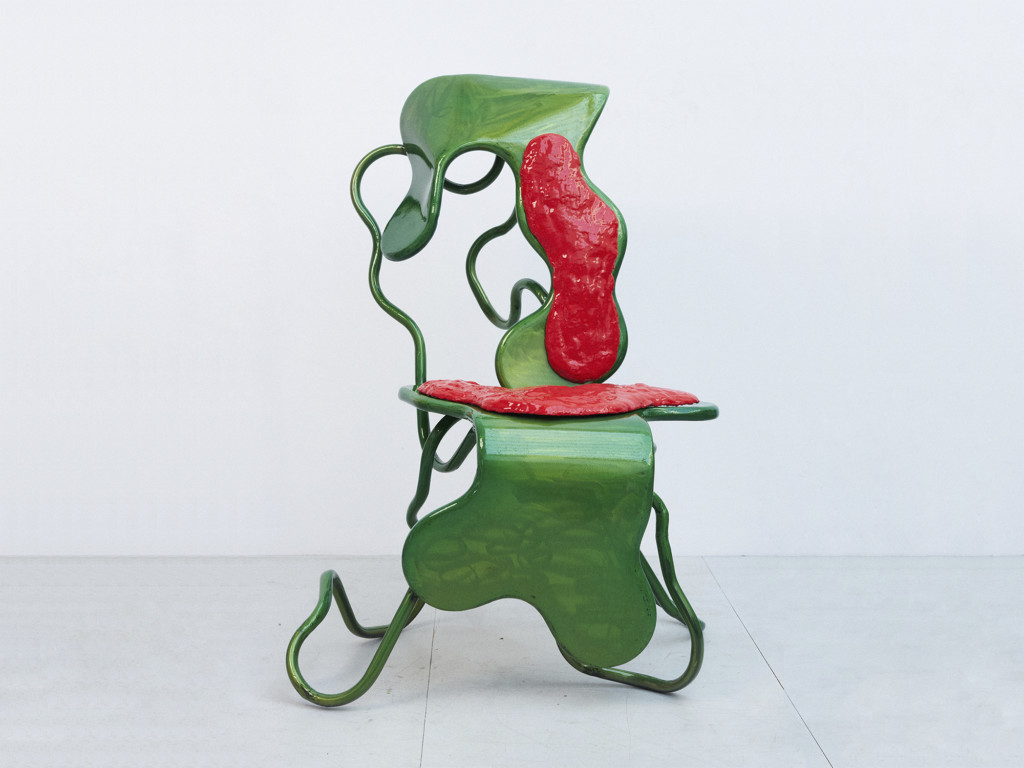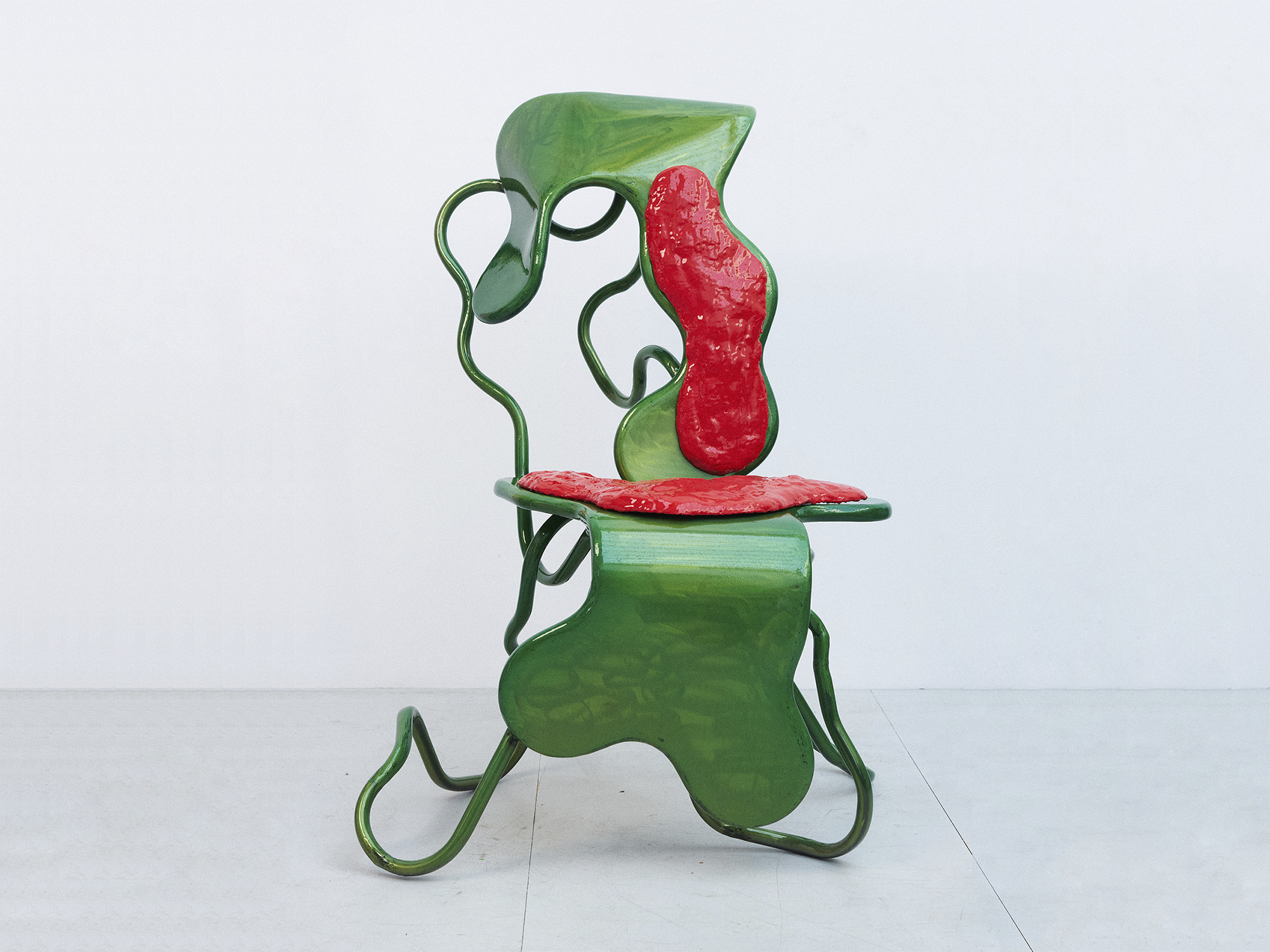Superhouse and Friedman Benda are pleased to announce a virtual presentation of new work by OrtaMiklos, the design duo of Leo Orta and Victor Miklos Andersen formed in 2015. Memory Foam takes place online from August 16 through September 26. The exhibition combines cutting-edge video, animation, and a video game for an innovative, interactive viewer experience, created in collaboration with digital artist Guillaume Roux, musician Antonio Davanzo, and writer Kristian Anoldi.
Memory Foam debuts a new series of 14 sculptural chairs rendered in brightly colored hues. One of OrtaMiklos’s most personal and symbolic bodies of work to date, each chair represents a different identity and is in turn named for a family member or friend who influenced their process and production. Conceived and produced when Andersen returned to his childhood home during the pandemic, the curvatures of the forms were informed by the contours of Denmark’s landscape.
Through Superhouse’s innovative digital platform, OrtaMiklos continues to explore new ways to create away from existing norms with a video game component of the show that allows a player to take on the persona of one of the chairs. Waking from a coma-like state, the chair begins to explore the post-apocalyptic environment in which it finds itself. Together, chair and player traverse the digital landscape, interacting with the other chairs in the series and understanding their different personalities and the alternate reality.
“The art video game presented as part of Memory Foam is the first of its kind,” says Superhouse founder Stephen Markos. “While visual artists have experimented with the medium in the past, no art video game has ever centered around furniture design. The game uses leading technology and a novel, narrative approach with Leo and Victor’s chairs as characters in the game.”
Jennifer Olshin, partner of Friedman Benda, adds: “We’re excited to collaborate with Superhouse on Memory Foam, where objects exist in the nexus between the real and imagined. By attributing enhanced traits and personalities to these hand-built chairs, the game offers an innovative way for users to unlock new dimensionality and adventure not possible in reality.”
The exhibition goes live on August 16, 2021. Access the exhibition here: https://www.superhouse.us/
ABOUT ORTAMIKLOS
Leo Orta (b. 1993, Paris) and Victor Miklos Andersen (b. 1992, Kalundborg) formed OrtaMiklos in 2015 while studying at the Design Academy Eindhoven. Since its establishment, OrtaMiklos has drawn inspiration from a wide variety of references, such as body movements and contortion, graffiti, and animation. Utilizing ad hoc sculpting and coloring processes, the duo employs materials spanning from electronic waste to widely available construction supplies like concrete and wood pulp.
“We have defined our way of working as ignorant design, forcing our work to be unaware of ongoing trends, colour themes or material values,” the creative duo states. “People may feel at ease to place it here or there; it’s not made for a specific place or group. We always thought that being free from these frames and borders was a good way to explore and have fun in our making.”
OrtaMiklos has been exhibited in solo and group exhibitions internationally, such as: Icebergs In Progress at Museo Marino Marini in Florence; Foncteur d’oubli, at Le Plateau Frac Ile-de-France; and at the Kleureyck: Van Eyck’s Colors in Design at Design Museum in Ghent in 2020 and Le Tripostal in Lille in 2021. Recently, they collaborated with digital artist Janis Melderis, composer Amédée De Murcia, and writer Richard Johnston Jones to realize a virtual occupation of the Temple of Dendur installed in the Metropolitan Museum of Art and entitled Temple of Confinement (2020). OrtaMiklos currently operates across two locations in Les Moulins, France, and Jyderup, Denmark.
ABOUT GUILLAUME ROUX
Guillaume Roux’s work is a mix of different practices including video, programming, sculpting, and tattooing. By mixing these mediums, Roux is researching a way to create a bridge between virtual and physical worlds as an answer to the exponential evolution of digital practices in the art world. Roux’s work is a place where fake and real are merging to generate illusions of an apocalyptic future representing the beginning of a renewal, an empty place conducive to the reconstruction of a new society.












